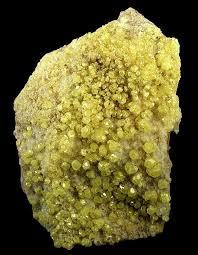The Versatile World of Alum: History, Production, and Applications:
Alum, a fascinating mineral compound, has been used by humans for centuries due to its diverse properties and applications.
From ancient times to modern industries, alum has played a significant role in various fields, ranging from medicine and water purification to food preservation and photography.
In this blog post, we will delve into the world of alum, exploring its history, production methods, and wide-ranging applications across different industries.Historical Significance: Alum has a long and storied history, dating back to the ancient civilizations of Egypt, Greece, and Rome. It was highly valued for its astringent and medicinal properties. Alum was also used as a mordant in dyeing processes and as a crucial ingredient in the production of pigments for painting and manuscript illumination during the medieval period.
Chemical Composition and Types: Alum is a general term used to describe a group of double sulphate salts. The most common type of alum is potassium aluminium sulphate (potassium alum), which has the chemical formula KAl(SO4)2·12H2O. Other types include ammonium alum, sodium alum, and chrome alum. Each type has slightly different properties and applications.
Production Methods: Traditionally, alum was obtained from naturally occurring sources such as alum-bearing rocks and minerals. These rocks were crushed and treated with sulfuric acid to extract the alum. However, today, the majority of alum is produced synthetically through the reaction of aluminium hydroxide with sulfuric acid or through the reaction of potassium sulphate or ammonium sulphate with aluminium sulphate.
Applications in Industries:
4.1. Water Treatment: Alum's excellent coagulating and flocculating properties make it a popular choice for water treatment plants. It helps in removing impurities, suspended particles, and organic matter from water, allowing it to be purified and safe for consumption.
4.2. Food Industry: Alum is used as a food additive in various processes. It acts as a preservative, maintaining the texture and crispness of pickles, fruits, and vegetables. It is also employed in baking powder as a leavening agent and in cheese production to aid in coagulation.
4.3. Tanning and Textile Industry: Alum is utilized in the tanning process to convert raw hides into leather. It helps in removing hair, flesh, and other unwanted substances from the hides. Additionally, alum is used in textile industries for dyeing and as a mordant to enhance the colourfastness of dyes.
4.4. Photography: Alum played a significant role in early photographic processes. It was used as a mordant to fix and stabilize the images produced by light-sensitive materials like albumen prints.
4.5. Medicine and Cosmetics: Alum has antiseptic and astringent properties, making it useful in medicinal and cosmetic products. It is employed in deodorants, antiperspirants, aftershaves, and as a soothing agent for minor cuts and burns.
Alum's versatility and wide-ranging applications have made it a valuable compound across various industries. From its historical significance to its role in water treatment, food preservation, photography, and medicine, alum continues to be an essential component in our daily lives. Its diverse properties and enduring popularity attest to its enduring value and importance in both traditional and modern contexts. Google Search Engine






0 Comments